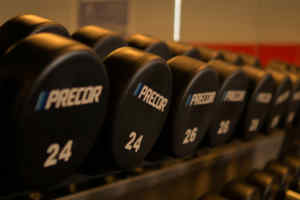Great news—so you underwent a vasectomy, and everything went smoothly. Now, it’s time to talk recovery process, downtime, and the timeline for easing back into your usual activities. For many patients, a regular routine involves some form of fitness and exercise, be it lifting weights at the gym, running, a pick-up basketball game, or biking.
But returning to your regularly scheduled programming takes anywhere from a few days to a few weeks, and rushing into strenuous activities too soon can cause extreme pain/discomfort in the surgical area. The key is to regain your fitness routine while being extremely mindful of anything that may cause infection in or reopen the surgical wound. Below is an overall guideline for regaining fitness levels after undergoing a vasectomy:
Immediately After Surgery
As soon as you complete a vasectomy procedure, you should not engage in any form of physical activity for 48 hours. This includes any form of exercise, sports, sexual activity, prolonged periods of standing, or even walking. Try to stay off your feet as much as possible, and follow care instructions provided by your doctor. Just turn on Netflix, ice the surgical area if you prefer, and rest. That’s it.
First Week After Surgery
In the 3-7 days following surgery, you can gradually increase your amount of physical activity ONLY if necessary. Rigorous exercise and sports should still be avoided, and do not lift objects (and babies!) heavier than 20 pounds.
If you feel fine after approximately four days and aren’t experiencing any discomfort/pain, walking or light exercises are allowed. Avoid anything more intense like weight-lifting, running, or biking, as this can cause significant build-up in pressure in the treated area. Furthermore, biking puts pressure on the penis and could hinder the healing process.

Two Weeks After Surgery
After two weeks of downtime, most men are able to resume their usual workouts (except extreme heavy lifting…more on that below). Non-contact sports such as golfing, bowling, tennis, and biking are allowed, but again, be extra aware of any pain or swelling. Stop activities immediately if aching occurs.
3+ Weeks After Surgery
While three or more weeks sounds like an excruciatingly long period of downtime, it’s best to err on the side of caution. Contact sports such as football, boxing, wrestling, hockey, basketball, martial arts, etc should not be resumed for at least three weeks after surgery.
**ATTENTION, WEIGHT LIFTERS: Wait at least four weeks before attempting heavy weights in low-repetition sets. Stick to lighter weights for now, as intense spurts of heavy lifting can significantly build up pressure in the surgical area and lead to massive internal bleeding in the scrotum. Not fun.
Ultimately, follow your doctor’s guidance on what is appropriate for your post-surgery timeline. Keep a close eye on signs of pain, swelling, and discomfort and judge your fitness abilities accordingly. In the event of any unpleasant side effects due to exercise, contact your physician immediately.
 After undergoing a vasectomy reversal, patients can expect a recovery process similar to that of their original vasectomy. Pain and swelling in the groin is to be expected for about 1-3 weeks, but most patients are able to return to work and daily activities within one week. Below is a breakdown of what to expect for post-surgery care and recovery:
After undergoing a vasectomy reversal, patients can expect a recovery process similar to that of their original vasectomy. Pain and swelling in the groin is to be expected for about 1-3 weeks, but most patients are able to return to work and daily activities within one week. Below is a breakdown of what to expect for post-surgery care and recovery:
 Do inform your doctor about any other medications you may be taking.
Do inform your doctor about any other medications you may be taking. Myth: In Vitro Fertilization (IVF) is quicker and easier than having a vasectomy reversal.
Myth: In Vitro Fertilization (IVF) is quicker and easier than having a vasectomy reversal. Myth: Couples should not try to conceive right after a vasectomy reversal for fear of a “leftover, defective sperm.”
Myth: Couples should not try to conceive right after a vasectomy reversal for fear of a “leftover, defective sperm.”





